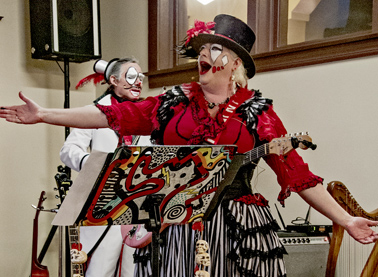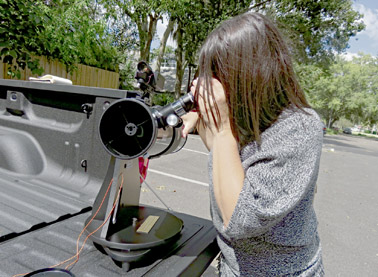HIGH SPRINGS – More than 20 people gathered in the High Springs City Commission chambers on Thursday, Oct. 27, encouraging commissioners to authorize a letter against a proposed 10,775-acre phosphate mine in north Florida by HPS II Enterprises. The proposed mine would border the Santa Fe River and straddle New River, a major tributary, which divides Union and Bradford counties.
Although commissioners had a few questions about the requested letter, they quickly and unanimously agreed to authorize the mayor to sign in support of Alachua County's position as soon as possible, without the need of another meeting.
Pamela Smith, President, Our Santa Fe River, made the initial request and provided supporting information for commission review. Both she and Mark Lions answered questions and explained how the phosphate mine would impact both water quality and the supply of drinking water for the state.
“Phosphate mining uses more water than any other industry,” said Lions.
“Union County quickly voted in a one-year moratorium on mine permit applications on April 18, 2016, giving them time to revise outdated and inadequate LDRs. Bradford County did not issue a moratorium and soon after, on April 29, 2016, the mining company submitted to them a mine permit application,” said Lions.
In other city business, Caesar, the High Springs Police Department's newest K-9 officer, will receive his new bullet-resistant vest at a special event on Nov. 15 at The Great Outdoors Patio Restaurant. “Yappy Hour” will take place from 6 – 8 p.m. and is sponsored by Humane Animal Treatment Charity, Inc., started by Arlene Levene and her husband, Gene. The public is invited to attend, bring their own dog, meet Caesar and thank Clare Noble, the person who wrote the check for the entire cost of the $700 vest.
Farm Share will be back in High Springs on Nov. 5 to donate food to area residents.
In light of upcoming holidays, the city has modified its commission meeting schedule for the rest of the year to Nov. 17 (Reorganization/ Commission Meeting), Nov. 29 and Dec. 8.
# # #
Email Cwalker@
alachuatoday.com
Add a comment






 Newberry Library patron Korina Zamora checks out the Newtonian reflecting telescope.
Newberry Library patron Korina Zamora checks out the Newtonian reflecting telescope.